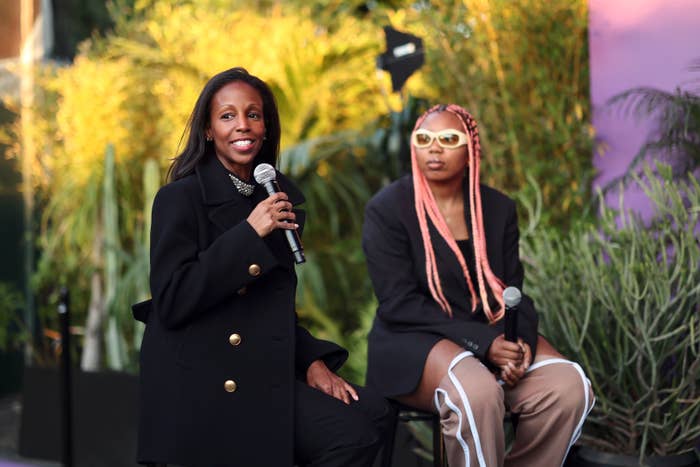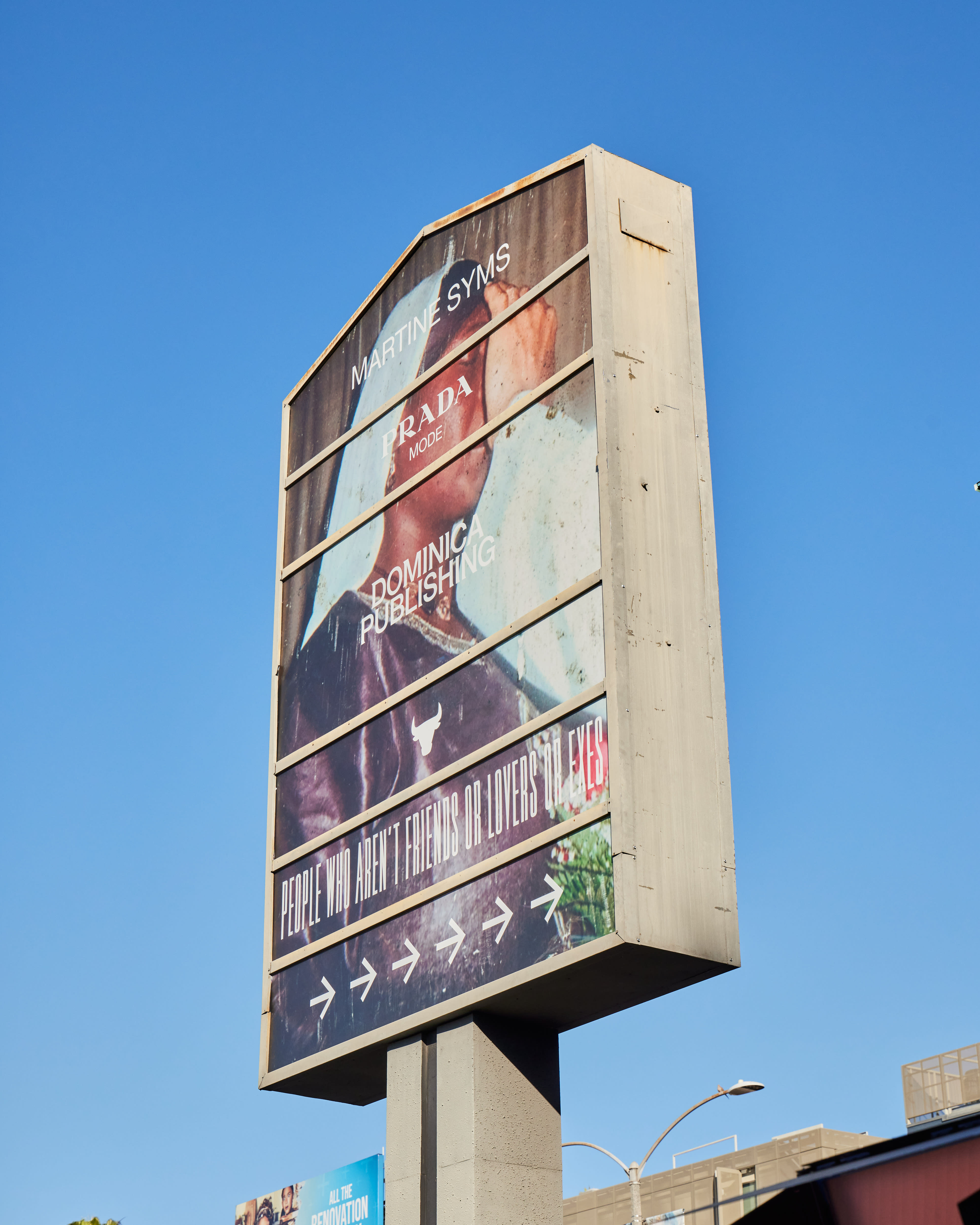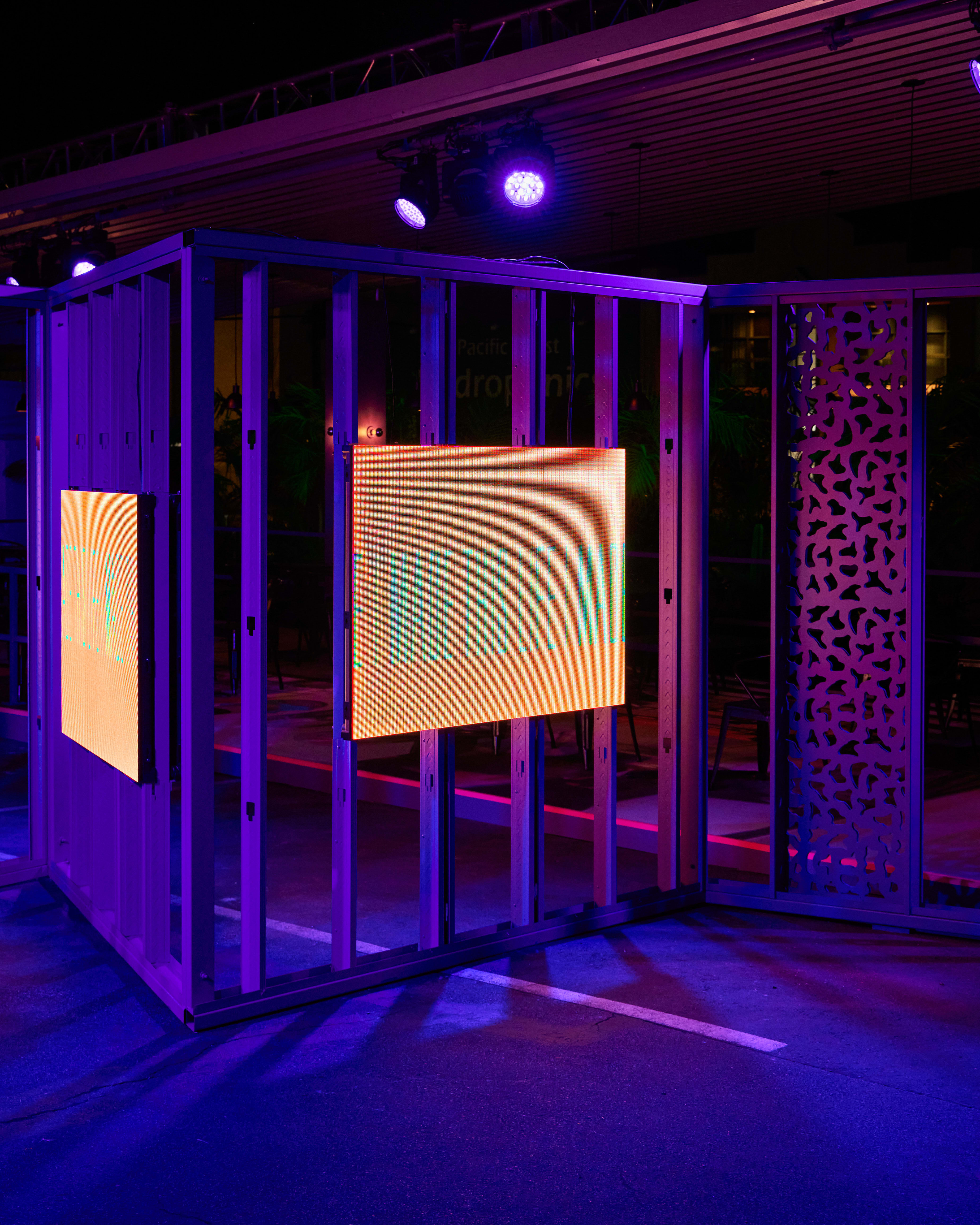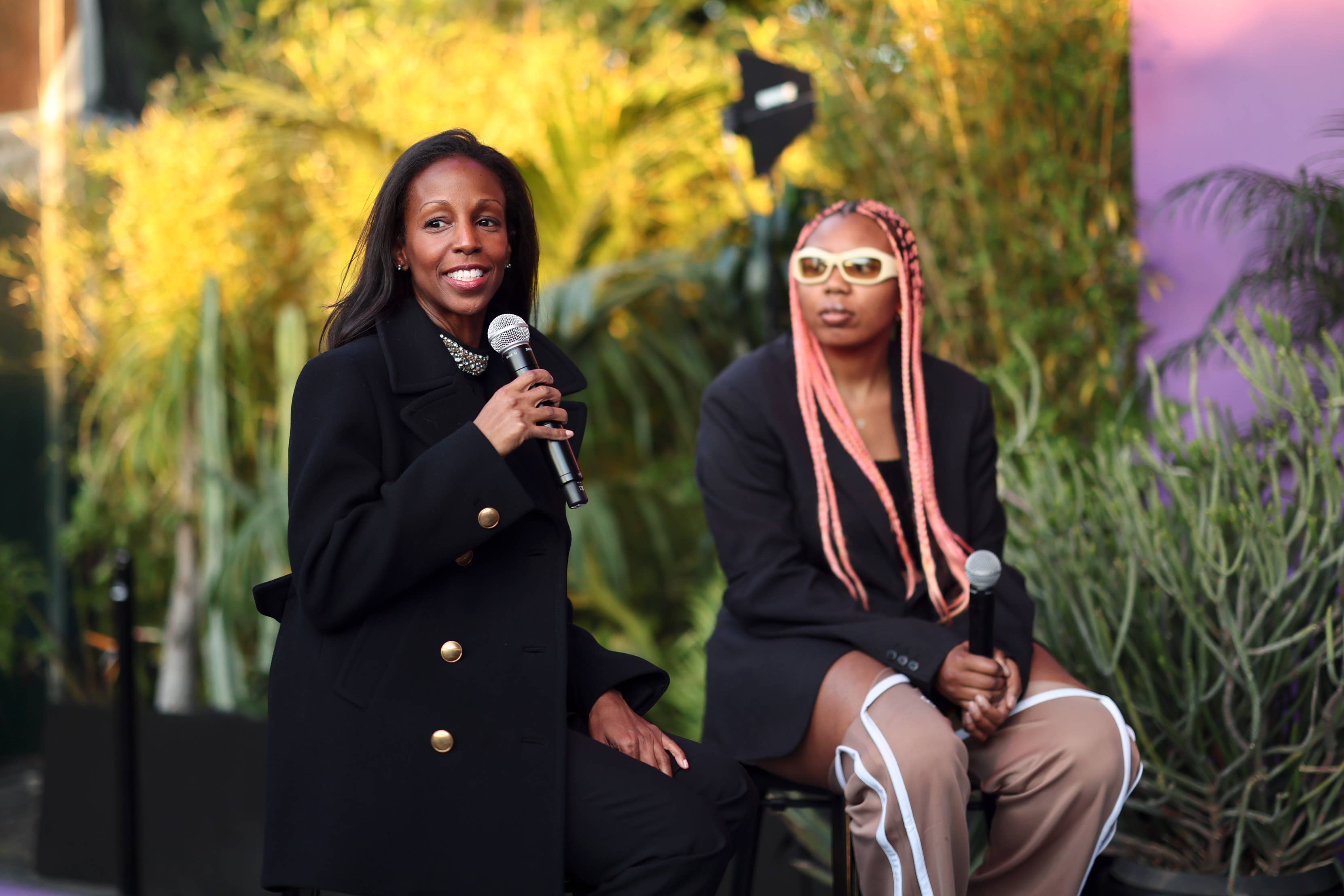
Now in its seventh iteration, Prada Mode, which aligned with Frieze Los Angeles, an art fair, partnered with artist Martine Syms who created “HelLA World” an interactive installation at Genghis Cohen, a Chinese restaurant on Fairfax Avenue.
Prada Mode, a traveling social club the luxury brand introduced in 2018 is defined as “a branded, culture-themed event platform featuring music, conversation, food, and fashion that generates site-specific experiences in concurrence with diverse global cultural events.”
The two-day event included talks in the evening with Syms, along with DJ sets from Acyde, Bae Bae, Bianca Lexis, Damar Davis, and more, along with performances from Sudan Archives and Junglepussy. All of this was situated amongst Syms interactive installation.
For Syms, she pulled from her previous works and created an experience that offered different opportunities for guests to feel seen. Monitors inside Genghis Cohen streamed text banners that included lyrics from a call and response portion of Sam Cooke’s 1963 performance at the Harlem Square Club in Overtown, a Black neighborhood in Miami. These monitors also had an interactive element and guests were encouraged to DM Syms messages that she would then post to the banners. “Call and response is a mode I’m really interested in,” says Syms, who has worked with Prada before on its Spring/Summer 2021 Linea Rossa campaign and its Spring/Summer 2021 Multiple Views collection. “And so often when I’m doing these text works I like that there might just be a sense of recognition with what’s said.”
Outside she dotted the space with surveillance camera screens that allowed guests to see themselves or their friends. Then there were also moments of recognition for herself and women who looked like her. The space was painted a vivid royal purple, which Syms says is a nod to the book “The Color Purple” by Alice Walker, and the film. “For me, I like to hear people say ‘the color purple’ when they see my work and it also is a reflection of Walker’s work as a Black feminist,” Syms says during a talk on Thursday night with Harvard professor of art history, African, and African American studies, Sarah Lewis.
Here, she speaks about her piece for Prada Mode, how fashion shows up in her work, and what she thinks about social media platforms.

You spoke a lot with professor Lewis about what your installation represented. But I was curious how you wanted to make people feel as they walked through it?
I wanted them to feel recognition. Like the text banner on the top. That’s from a Sam Cooke album. It’s a part where he’s speaking to the audience and asking them how they are. It’s a call and response between him and the audience and I used it for a public art piece in Miami for a poetry festival. And I kind of think about call and response as a mode I’m really interested in. And I like that inside the restaurant on the monitors, before people realize they can contribute to that, there might just be a sense of recognition with what’s said. And then outside there is the surveillance style camera work and they might see themselves literally, or they might see someone they recognize. And it’s a simple strategy but that sense of recognition or seeing yourself in something is always fun and exciting. And it can be surprising.
How does fashion connect with your work?
I’ve actually made clothes for myself for a long time and I’ve always been really, really interested in clothing from different subcultures. That was a way you recognize your people. And I am interested in clothes, especially within Black aesthetics and the way people dress. I was just laughing with my friend this morning because last night we were seated with Jeff Goldblum and his wife and they were matching. And it reminded me of my cousins who are from Chicago. And they always had these crazy matching outfits. No matter what family function it was, they were in these custom looks. I live in Leimert Park and there’s this store in the Crenshaw Mall that’s just called Kings. Style has always just been a really big part of my self-expression from a really young age. I follow fashion and I’ve worked in fashion. And clothing as sculpture is often incorporated into my shows and exhibitions. And last year I did a capsule collection with Etudes. It’s something that goes in and out of my work. And in my films costuming is always a big part of the storytelling.

You’ve worked with Prada on different projects before. What is it like working with them? It seems like you have a lot of creative freedom?
What I like about working with Prada is that they have respect for strong voices and strong visions. And that is seen in everything that they do. And they are open to innovation. What they really have been cool with is me saying ‘No. I don’t want to do that.’ Or ‘Let’s do this instead.’ When I was presenting this piece to Mrs. Prada, she was like ‘I love it, but is this exciting to you? is this something you want to do?’ And I was like, ‘Yea.’
I went to your social accounts and it doesn’t seem like you are that active. But I know short-form video is a big part of your work and it has been for a while, before YouTube and Instagram. How do social media platforms impact your work?
I hate social media. That’s the short and long answer, right? I grew up online. I’m like the first generation that had computers when they were a kid. And I think by the time social media started, at the tail end of the Blogspot era and when things transitioned from Tumblr to Instagram, it lost me and I kind of got off everything. I also was thinking a lot about surveillance. I hosted a podcast for the Carnegie Museum of Art last year that was about the intersection of artificial intelligence, surveillance, and art. So I was not into the privacy side of it and the location tracking. I also started to not love my friend’s online personas. Having Instagram was bad for me. For a while, I was into Twitter, but then after I hit 10 years on it, it was like I’ve been documenting my thoughts and giving value to this company that doesn’t care about me. And I get nothing from it. Like I could have written a book. Black people own the internet. And I think about this with samplers and a lot of things. Black people decide what technology is used for. And I’m really interested in what that will come to mean.

Do you have a background in tech?
Well at Nasty Gal I was an interactive designer but I helped with the apps and web design. That’s my background. I learned how to code when I was younger on LiveJournal. And for an exhibit, I built an app for MoMa. With a lot of my videos, I built the software they run on. But I think that just because of that experience, I’m excited for when we are making more technology. Because they really do own all of our thoughts, images, pictures, etc.
Ok this is a little random, but I know that your thesis project from the Art Institute of Chicago focused on the “Real World: New York” show and the argument Becky [Blasband] and Kevin [Powell] had over race. Did you watch the reunion? I’m curious what you thought of it.
Yes. I watched when they replayed it and she like retraumatized him. My college thesis was based on that argument. So to watch them watch themselves and then have the same type of argument again…I was interested in the circularity of it. With these kinds of conversations people always want to prove why they need you to understand. And I was like, you don’t need to understand anything. Just listen to what I’m saying. And to see Kevin’s face and him trying to explain to her what that did to his life and her inability to see it. It was so painful to watch.

